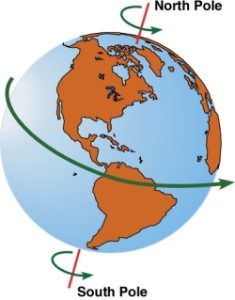Points or Poles?
Are Poles of Inaccessibility correctly named or should they actually be termed Points of Inaccessibility?
A geographical pole is defined as one of two points on the surface of a rotating body or planet where the axis of rotation meets the surface of the planet. The North Pole is thus 90 degrees north of the equator and the South Pole is 90 degrees south of the equator.

Since Planet Earth isn’t rotating about an imaginary spin axis through any of the POIs then it stands to reason they are probably mis-named. These places are really just almost-random points on the Earth’s surface, so the correct terms should probably be POINTS of Inaccessibility.
However, you will also be familiar with north and south poles on a magnet. Historically, adventurers have referred to the North Magnetic Pole of the Earth’s magnetic field as the North Pole. You can tie yourself in knots thinking about north magnetic poles actually being south-seeking poles but we are looking at terminology here; scientists, geographers and explorers refer to “Poles” outside of the rotation-definition.
Which to choose?
Points of Inaccessibility
The main Poles of Inaccessibility for the Earth’s largest land masses are well documented and, even if the exact locations may be disputed, the coordinates are readily available. They are commonly referred to in all forms of media as Poles of Inaccessibility. It seems futile to try and change that, so we must surrender to the tyranny of language usage.
Instead, at Inaccessibility.net, we’ve decided to refer to the inaccessible places on smaller land masses, states and counties as Points of Inaccessibility or POI.
This will serve three purposes:
- Maintain the usage of “Pole” for the most well-known continental locations and
- Distinguish these new, minor points from the major